| TECHNICAL DATA |
|---|
| | M2HB |
|---|
| Country of Origin | USA |
|---|
| Date Of Introduction | 1938 |
|---|
| Crew | 1-4 (crew leader, gunner, assistant gunner, ammunition bearer) |
|---|
| Caliber | 0.50 in (12.7 mm) |
|---|
| Cartridge | .50 Caliber Browning (12.7 x 99 mm) |
|---|
| System of Operation | Recoil |
|---|
| Cooling | Air |
|---|
| Weight | 84 lb (38.1 kg) |
|---|
| Length | 65.13 in (1,654.3 mm) |
|---|
| Barrel Weight | 24 lb (10.9 kg) |
|---|
| Barrel Length | 45 in (1,143.0 mm) |
|---|
| Barrel Rifling | R.H., eight grooves, pitch 1 in 15 inches (381 mm) |
|---|
| Basic Load (vehicle mount) | 400 rounds |
|---|
| Ammunition Weight | 100 rounds in ammo can: 35 lb (16 kg) |
|---|
| Performance |
|---|
| Rate of Fire | Single shot
Sustained: Less than 40 rds/min, in bursts of five to seven rounds
Rapid: More than 40 rds/min, fired in bursts of five to seven rounds
Cyclic: 450-550 rds/min |
|---|
| Maximum Range | 7,440 yd (6,800 m) |
|---|
| Maximum Effective Range | Area Target: 2,000 yd (1,830 m)
Point Target (single shot): 1,640 yd (1,500 m) |
|---|
| M3 Tripod |
|---|
| Weight With T&E Mechanism and Pintle | 44 lb (20 kg) |
|---|
| Height of M2 on Tripod | 12 in (304 mm) |
|---|
| M63 Anti-aircraft Mount |
|---|
| Weight | 144 lb (65 kg) |
|---|
| Height | 42 in (1,067 mm) |
|---|
| Maximum Elevation | 85° |
|---|
| Maximum Depression | 29° |
|---|
| Maximum Traverse | 360° |
|---|
DESCRIPTION
The M2 .50 caliber machine gun is an automatic, belt-fed, recoil-operated, air-cooled, crew-operated machine gun.
This gun may be mounted on ground mounts and most vehicles as an anti-personnel and anti-aircraft weapon.
The gun is capable of single-shot (ground version M2), as well as automatic fire and was used to a very limited degree as a sniper weapon during the Vietnam war.
The weapon provides automatic weapon suppressive fire for offensive and defensive purposes.
This weapon can be used effectively against personnel, light armored vehicles; low, slow flying aircraft; and small boats.
The M2 machine gun uses the M3 Tripod. The principal night vision sight used with the M2 is the AN/TVS-5.
By repositioning some of the components, the M2 is capable of alternate feed.
Ammunition can be fed into the weapon from the right or left side of the receiver; however the U.S. Army uses only left-hand feed.
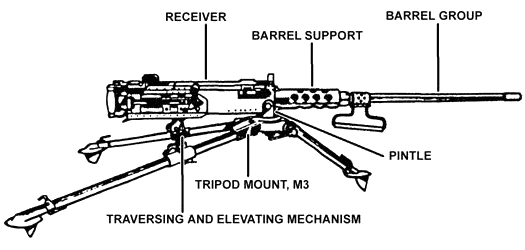
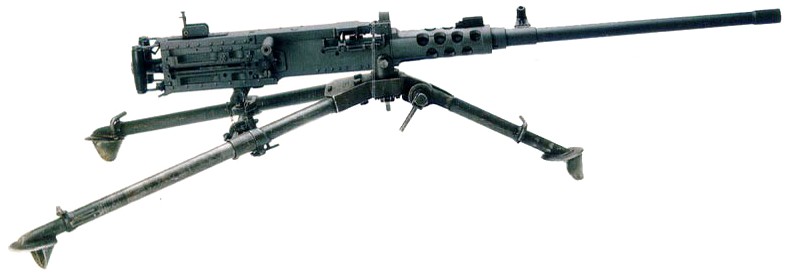
GROUND MOUNT - M3 TRIPOD MOUNT
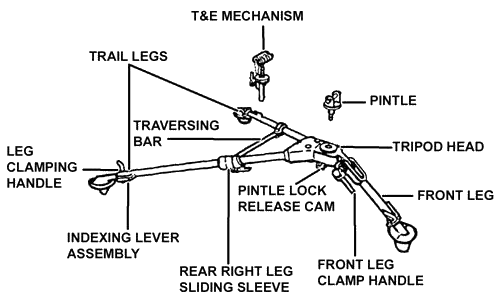
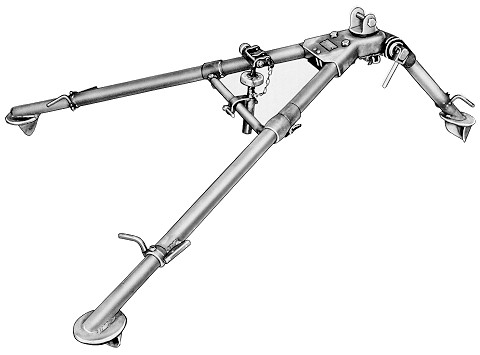
The M3 tripod is the standard ground mount of the M2 machine gun.
It is a folding tripod with three, telescopic, tubular legs connected at the tripod head.
Each leg ends in a metal shoe that can be stamped into the ground for greater stability.
The two trail legs are joined together by the traversing bar.
The traversing bar serves as a support for the traversing and elevating mechanism, which in turn supports the rear of the gun.
The tripod head furnishes a front support for the mounted gun that is further supported by the short front leg.
When the tripod is emplaced on flat terrain with all extensions closed, the adjustable front leg should form an angle of about 60° with the ground.
This places the gun on a low mount about 12 inches (304 mm) above the ground.
To raise the tripod farther off the ground, extend the telescopic front and trail legs enough to keep the tripod level and maintain the stability of the mount.
The traversing and elevating (T&E) mechanism is used to engage preselected target areas at night or during limited visibility conditions.
The T&E mechanism consists of a traversing handwheel, locking nut, scale, and yoke.
The T&E mechanism is attached to the traversing bar of the M3 bipod.
Direction and elevation readings constitute the data necessary to engage preselected target areas during limited visibility.
These readings are measured by and recorded from the traversing bar and the T&E mechanism.
To obtain accurate readings, the T&E must be first zeroed with all measurements recorded in mils.
The gun is connected to the M3 tripod mount by a pintle.
This pintle is semipermanently attached to the machine gun by a pintle bolt through the front mounting hole in the receiver.
The tapered stem of the pintle seats in the tripod head.
It is held secure by a pintle lock and spring.
To release the pintle, raise the pintle lock, releasing the cam.
GROUND MOUNT - M63 ANTI-AIRCRAFT MOUNT
The M63 anti-aircraft mount is a four-legged, low silhouette, portable mount used for anti-aircraft fire.
Its use against ground targets is limited because the mount tends to be unstable when the gun is fired at low angles.
VEHICULAR MOUNT - M36 TRUCK RING MOUNT
This mount consists of a cradle with a roller carriage on a circular track.
The cradle can be rotated in the pintle sleeve of the carriage and can be adjusted for elevation.
The carriage is guided on the track by rollers.
The track is secured to the vehicle by supports.
VEHICULAR MOUNT - M4, M24A2, M31C PEDESTAL MOUNTS
Pedestal mounts are component assemblies designed for installation on the 1/4-ton vehicles to support a machine gun mount.
They are composed of a pintle socket, pintle clamping screw column, and braces.
VEHICULAR MOUNT - MK64 GUN CRADLE MOUNT
This vehicle mount was primarily designed for the M2.
However, because of its versatility, the MK64 will accept the MK 19 also (using the M2 mounting adapter assembly).
The MK64 can be mounted on the following vehicles: M151 series, M966 HMMWV armament carrier, and the M113 series.
VEHICULAR MOUNT - MK93 DUAL MOUNT
A dual purpose cradle mount that replaces the MK64 mount.
Allows for quick and accurate traverse and elevation, further range (elevation) for the MK 19, recoil attention of the M2 machine gun and capability for range card preparation.
VARIANTS
- M2HB, Flexible (NSN 1005-00-322-9715)
-
"Machine Gun, Cal .50, Browning, M2, Heavy Barrel, Flexible". Ground version of the M2HB. See data above.

- M2HB, M48 Turret Type (NSN 1005-00-957-3893)
-
"Machine Gun, Cal .50, Browning, M2, Heavy Barrel, M48 Turret Type".
An air-cooled, recoil operated, alternate-feed, automatic, crew-served weapon mounted on the Abrams main battle tank commander's station.

- M2HB, Soft Mount (NSN 1005-01-343-0747)
-
"Machine Gun, Cal .50, Browning, M2, Heavy Barrel, Soft Mount".
A belt-fed, recoil operated, air-cooled, crew-served machine gun mounted on the U.S. Navy's MK 26 Mod 15, 16, and 17 gun mounts.
- M2HB, Fixed Type (Right hand: NSN 1005-00-122-9339, Left hand: NSN 1005-00-122-9368)
-
"Machine Gun, Cal .50, Browning, M2, Heavy Barrel, Fixed Type Right Hand Feed",
"Machine Gun, Cal .50, Browning, M2, Heavy Barrel, Fixed Type Left Hand Feed".
Belt-fed, recoil operated, air-cooled, crew-served machine guns mounted on the U.S. Navy's MK 56 Mod 0 and 4 gun mounts.
They are primarily fired by solenoid and requires a 24-28 Volts DC power source.
- M2HB (Enhanced) .50 Caliber Machine Gun (E50)
-
The E50 machine gun kit adds new features and design improvements to the M2HB:
- Closed bolt system with a manual trigger block safety: Allows movement of the weapon with a chambered round.
- Fixed headspace and timing: Eliminates safety concerns based on exposure time associated with barrel changing.
- Common barrel thread: Interchanges with existing HB barrels; eliminates logistics concerns during fielding; and simplifies conversion of existing barrels to the Quick Change Barrel (QCB) configuration.
- Positive barrel engagement: Patented J-slot barrel retention system assures that the barrel is securely locked and aligned.
- Flash hider: Reduces muzzle flash, making the M2 night-vision friendly.
- Robust removable barrel handle: Simplifies hot-barrel changing.
- Picatinny Optics rail: Quickly adaptable to existing sighting systems.
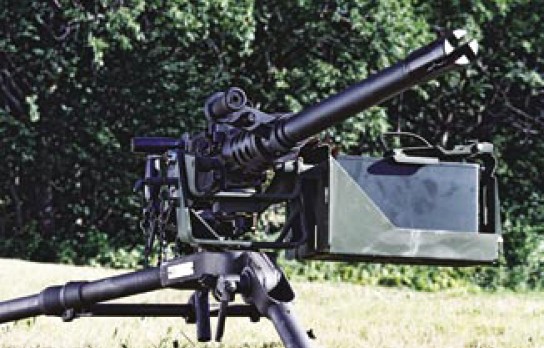
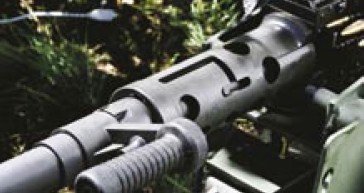
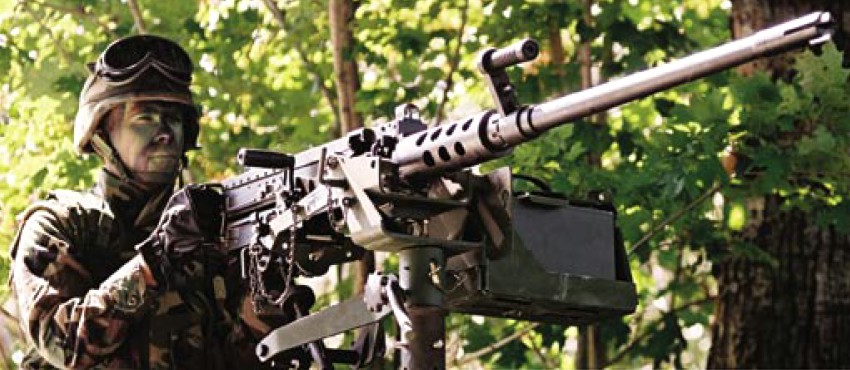
850x370, 99K, JPEG
- M2 Aircraft Gun
-
A .50 caliber M2 machine gun that is modified for use as an aircraft gun that can be fired remotely by the pilot or gunner of a helicopter or light fixed-wing aircraft.
The M2 aircraft gun has a rate of fire of 750-850 rounds per minute. The M2 aircraft gun is classified Standard A.
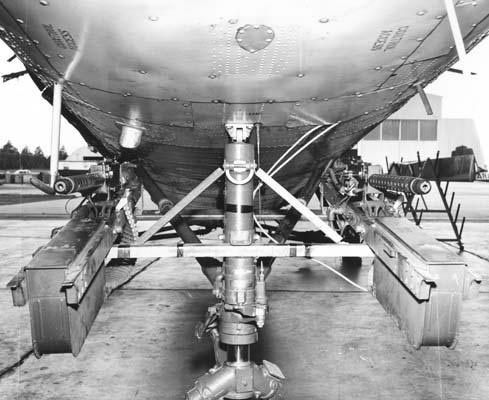
Experimental twin .50 gun mounts on CH-21 Shawnee.
- M3 Aircraft Gun
-
The Browning M3 aircraft gun is a .50 caliber M2 machine gun modified for use as an aircraft gun that can be fired remotely by the pilot or gunner of a helicopter or light fixed-wing aircraft.
The M3 machine gun has a rate of fire of 1150-1250 rounds per minute. The M3 aircraft gun is classified Standard A.
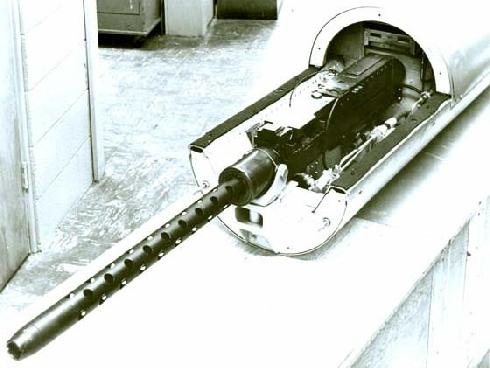
M3 mounted in XM14 gun pod.
- XM296 Machine Gun
-
The XM296 is a pod mounted, automatic, recoil-operated, link-belt fed, air-cooled machine gun used on the OH-58D Kiowa Warrior helicopter.
The weapon has a maximum rate of fire from 750-800 rounds per minute.
The XM296 machine gun functions in the same manner as the M2 machine gun, except it is fired remotely using an electrical solenoid and does not contain the bolt latch which allows for single-shot operation.
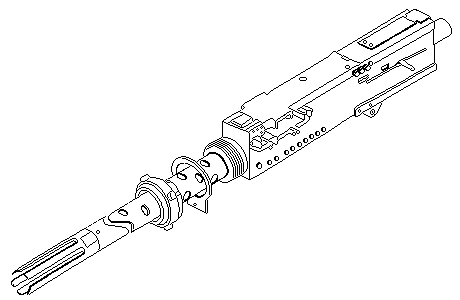
OPERATION
The cycle of functioning is broken down into basic steps: feeding, chambering, locking, firing, unlocking, extracting, ejecting, and cocking.
Some of these steps may occur at the same time.
Cycle of functioning
- Feeding.
Feeding is the act of placing a cartridge in the receiver, approximately in back of the barrel, ready for chambering. When the bolt is fully forward and the top is closed, the ammunition belt is held in the feedway by the belt-holding pawl.
-
As the bolt is moved to the rear, the belted ammunition is moved over and then held in a stationary position by the belt-holding pawl. At the same time, the belt-feed pawl rides up and over the link, holding the first round in place.
When the bolt is all the way to the rear, the belt-feed slide moves out far enough to allow the belt-feed pawl spring to force the pawl up between the first and second rounds.
-
As the bolt moves forward, the belt-feed slide is moved back into the receiver, pulling with it the next linked cartridge.
When the bolt reaches the fully forward position, the belt-holding pawl will snap into place behind the second linked cartridge, holding it in place.
The extractor will then grasp the rim of the first cartridge, preparing to release it from the belt on the next rearward motion.
-
As the bolt then moves to the rear, the extractor will pull the cartridge with it, releasing it from the belt.
As it moves to the rear, the extractor is forced down by the extractor cam, causing the cartridge to be moved into the T-slot in the bolt face, preparing the cartridge to be chambered.
It is connected under the extractor switch on the side of the receiver until it is repositioned by the forward movement of the bolt, and pressure of the cover extractor spring forces it over the next round.
- Chambering.
Chambering is placing the cartridge into the chamber of the weapon.
During this cycle, the bolt moves forward, carrying the cartridge in the T-slot in a direct route to the chamber of the weapon.
At the same time, the extractor rides up the extractor cam and when the bolt is fully forward, the extractor grasps the next linked cartridge
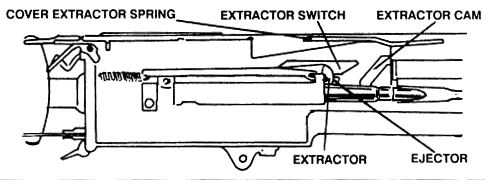
- Locking.
The bolt is locked to the barrel and barrel extension.
-
Initially, the bolt is forced forward in counter-recoil by the energy stored in the driving spring assembly and the compressed buffer disks.
At the start of counter-recoil, the barrel buffer body tube lock keeps the accelerator tips from bounding up too soon and catching in the breech lock recess in the bolt.
After the bolt travels forward about 5 inches, the lower rear projection of the bolt strikes the tips of the accelerator, turning the accelerator forward.
This unlocks the barrel extension from the barrel buffer body group and releases the barrel buffer spring. The barrel buffer spring expands, forcing the piston rod forward.
-
Since the cross groove in the piston rod engages the notch on the barrel extension shank, the barrel extension and barrel are also forced forward by the action of the barrel buffer spring.
Some of the forward motion of the bolt is transmitted to the barrel extension through the accelerator.
As the accelerator rotates forward, the front of the accelerator speeds up the barrel extension; at the same time, the accelerator tips slow down the bolt.
-
Locking begins 1 1/8 inches before the recoiling groups (bolt, barrel extension, and barrel) are fully forward.
The breech lock in the barrel extension rides up the breech lock cam in the bottom of the receiver into the breech lock recess in the bottom of the bolt, locking the recoiling groups together.
The recoiling groups are completely locked together three-fourths of an inch before the groups are fully forward
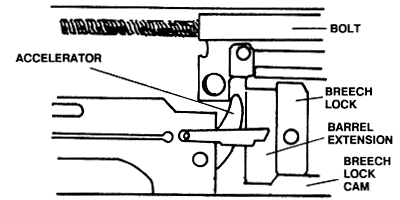
- Firing.
The firing pin is released, igniting the primer of the cartridge.
-
As the trigger impressed down, it pivots on the trigger pin, so that the trigger cam on the inside of the backplate engages and raises the rear end of the trigger lever.
This in turn pivots on the trigger lever pin assembly, causing the front end of the trigger lever to press down on the top of the sear stud.
The sear is forced down until the hooked notch of the firing pin extension is disengaged from the sear notch.
The firing pin and firing pin extension are driven forward by the firing pin spring; the striker of the firing pin hits the primer of the cartridge, firing the round.
-
For automatic firing, the bolt-latch release must be locked or held depressed, so that the bolt latch will not engage the notches in top of the bolt, holding the bolt to the rear as in single-shot firing.
The trigger is pressed and held down. Each time the bolt travels forward in counter-recoil, the trigger lever depresses the sear, releasing the firing pin extension assembly and the firing pin.
This automatically fires the next round when the forward movement of the recoiling groups is nearly completed.
The gun should fire about one-sixteenth of an inch before the recoiling groups are fully forward. Only the first round should be fired with the parts fully forward.
The gun fires automatically as long as the trigger and bolt latch are held down and ammunition is fed into the gun.


- Unlocking.
The bolt is unlocked from the barrel and barrel extension.
-
At the instant of firing, the bolt is locked to the barrel extension and against the rear end of the barrel by the breech lock, which is on top of the breech lock cam and in the breech lock recess in the bottom of the bolt.
When the cartridge explodes, the bullet travels out of the barrel; the force of recoil drives the recoiling groups rearward.
During the first three-fourths of an inch, the recoiling groups are locked together.
As this movement takes place, the breech lock is moved off the breech lock cam stop, allowing the breech lock depressors (acting on the breech lock pin) to force the breech lock down, out of its recess from the bottom of the bolt.
At the end of the first three-fourths of an inch of recoil, the bolt is unlocked, free to move to the rear independent of the barrel and barrel extension.
-
As the recoiling groups move to the rear, the barrel extension causes the tips of the accelerator to rotate rearward.
The accelerator tips strike the lower rear projection of the bolt, accelerating the movement of the bolt to the rear.
The barrel and barrel extension continue to travel to the rear an additional three-eighths of an inch, or an approximate total distance of 1 1/8 inches until they are stopped by the barrel buffer assembly.
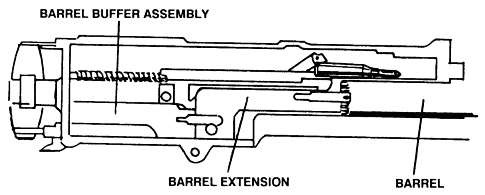
-
During the recoil of 1 1/8 inches, the barrel buffer spring is compressed by the barrel extension shank, since the notch on the shank is engaged in the cross groove in the piston rod head.
The spring is locked in the compressed position by the claws of the accelerator, which engage the shoulders of the barrel extension shank.
After its initial travel of three-fourths of an inch, the bolt travels an additional 6 3/8 inches to the rear, after it is unlocked from the barrel and barrel extension, for a total of 7 1/8 inches.
During this movement, the driving springs are compressed. The rearward movement of the bolt is stopped as the bolt strikes the buffer plate.
Part of the recoil energy of the bolt is stored by the driving spring rod assembly, and part is absorbed by the buffer disks in the backplate.

- Extracting.
The empty cartridge case is pulled from the chamber.
-
The empty case, held by the T-slot, has been expanded by the force of the explosion; therefore, it fits snugly in the chamber.
If the case is withdrawn from the chamber too rapidly, it may be torn.
To prevent this, and to ensure slow initial extraction of the case, the top forward edge of the breech lock and the forward edge of the lock recess in the bolt are beveled.
As the breech lock is unlocked, the initial movement of the bolt away from the barrel and barrel extension is gradual.
-
The slope of the locking faces facilitates locking and unlocking and prevents sticking.
The leverage of the accelerator tips on the bolt speeds extraction after it is started by kicking the bolt to the rear to extract the empty case from the chamber.
- Ejecting.
The empty cartridge case is expelled from the receiver.
-
As the bolt starts its forward movement (counter-recoil), the extractor lug rides below the extractor switch, forcing the extractor assembly farther down until the round is in the center of the T-slot of the bolt.
-
The round, still gripped by the extractor, ejects the empty case from the T-slot.
The last empty case of an ammunition belt is pushed out by the ejector.
- Cocking.
The firing pin is withdrawn into the cocked position.
-
When the recoiling groups are fully forward, the top of the cocking lever rests on the rear half of the V-slot in the top plate bracket.
As the bolt moves to the rear, the top of the cocking lever is forced forward.
The lower end pivots to the rear on the cocking lever pin.
The rounded nose of the cocking lever, which fits through the slot in the firing pin extension, forces the extension to the rear, compressing the firing pin spring against the sear stop pin (accelerator stop).
As the firing pin extension is pressed to the rear, the hooked notch of the extension rides over the sear notch, forcing the sear down.
The sear spring forces the sear back up after the hooked notch of the firing pin extension has entered the sear notch.
-
The pressure of the sear and firing pin springs holds the two notches locked together.
There is a slight overtravel of the firing pin extension in its movement to the rear to ensure proper engagement with the sear.
As the bolt starts forward, the overtravel is taken up and completed when the cocking lever enters the V-slot of the top plate bracket, and is caromed toward the rear; pressure on the cocking lever is relieved as the bolt starts forward.
AMMUNITION
Ammunition is issued in a disintegrating metallic split-linked belt (M2 or M9 links). The preferred combat ammunition mix for the
M2 machine gun is four API (M8) to one API-T (M20) with M9 link.
Click here for more information.
M2 ammunition is packaged in a metal box containing 100 linked rounds. Each box of 100 rounds weighs approximately 35 pounds (16 kg).
- M1 High Pressure Test.
- M1, M10, M17, M21 Tracer.
- M1, M23 Incendiary.
- M1A1 Blank.
- M2 Dummy.
- M2, M33 Ball.
- M2 Armor-Piercing (AP).
- M8 Armor-Piercing Incendiary (API).
- M20 Armor-Piercing Incendiary Tracer (API-T).
- M903 Saboted Light Armor Penetrator (SLAP). Lined barrel only.
- M962 Saboted Light Armor Penetrator Tracer (SLAP-T). Lined barrel only.
FIRING POSITIONS
The
tripod firing positions are prone, sitting, and standing. They are assumed in the following manner:
-
The prone position is used when firing from the tripod that is set in a low position.
It is assumed by lying on the ground directly behind the gun.
The gunner then spreads his legs a comfortable distance apart with his toes turned outward.
His left elbow rests on the ground, and his left hand grasps the elevating handwheel of the T&E.
His right hand lightly grasps the right spade grip with his right thumb in a position to press the trigger.
The position of his body can then be adjusted to position his firing eye in alignment with the sights of the weapon.

-
The sitting position can be used when the tripod is set in a high or low position.
The gunner sits directly behind the gun between the legs of the tripod.
He may extend his legs under the tripod or cross them, depending on his physique.
The gunner then places both elbows on the inside of his thighs to get the best support.
He grasps the elevating handwheel of the T&E with the left hand, and lightly grasps the right spade grip with his right hand.
He must ensure that the right thumb is in position to press the trigger
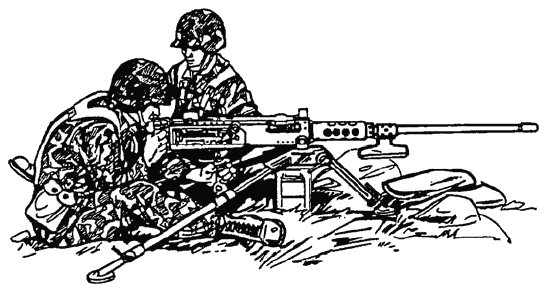
-
The standing position is used when the gunner is firing from a fighting position.
This position is assumed by standing directly behind the gun with the feet spread a comfortable distance apart.
The gunner grasps the elevating handwheel of the T&E with the left hand.
He lightly grasps the right spade grip with the right hand, ensuring that the right thumb is in a position to press the trigger.
Adjustment of the body is allowed in order to align the firing eye with the sights on the weapon
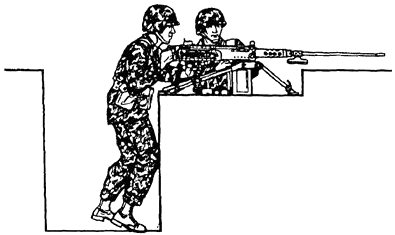
The
vehicular firing position for the M2 is standing.
It is assumed by constructing a solid platform to stand on, using sandbags or ammunition boxes; or, in the case of the M113 APC, using the commander's seat.
The gunner must then ensure that his platform is high enough to place the spade grips of the gun about chest high.
He grasps the spade grips with both hands and places both thumbs in a position to press the trigger.
The gunner holds the gun tightly to his chest for stabilization; his elbows should be locked tightly to his sides.
He sights over the weapon and adjusts his position by flexing his knees and leaning forward to absorb any recoil.
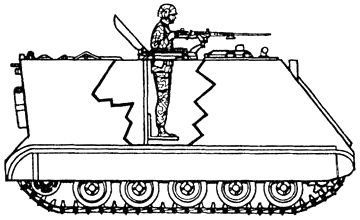
The
anti-aircraft firing position uses a standing position when firing from the M63 mount.
To assume the position, the gunner stands with his feet spread comfortably apart with his shoulders squarely behind the gun.
When the gunner is engaging aerial targets, he grasps the upper extension handles with both hands.
When engaging low-level aircraft or ground targets, he grasps the lower extension handles with both hands.
The kneeling position may be used; it has the advantage of presenting a lower profile of the gunner and also aligns the gunner's eye closer to the axis of the barrel.
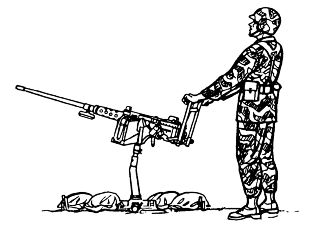
WEAPON CAPABILITIES
In the urban environment, the M2 machine gun provides high-volume, long-range, automatic fires for the suppression or destruction of targets.
The M2 provides final protective fire along fixed lines and can be used to penetrate light structures. Tracers are likely to start fires.
The M2 machine gun is often employed on its vehicular mount during both offensive and defensive operations.
If necessary, it can be mounted on the M3 tripod for use in the ground role or in the upper levels of buildings.
When mounted on a tripod, the M2 machine gun can be used as an accurate, long-range weapon and can supplement sniper fires.
When shooting at ground targets from a stationary position, the gun is fired in bursts of 9 to 15 rounds.
When firing at aircraft, a continuous burst is used rather than several short bursts.
When firing on the move, long bursts of fire are walked into the target.
Enemy ATGM gunners, lightly-armored vehicles, and troops can be suppressed with a heavy volume of fire until a force can destroy or bypass the opposition.
More M2 Art - Click on image sample to see full size image.

U.S. Army Photo
1130x330, 66K, JPEG
M2 Photos - Click on image sample to see full size image.

M2HB
U.S. Air Force Photo
18-MAR-2004
2100x854, 312K, JPEG
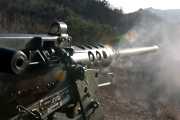
Vehicle mounted M2HB
Amphibious Ready Group Exercise 2004 (ARGEX 04)
U.S. DoD Photo by CPL Gregory A. Russell
18-MAR-2004
1500x1000, 360K, JPEG
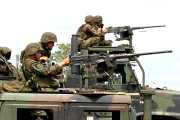
12th Marine Regiment, Combined Marine Forces, Cobra Gold
Live fire practice, Thailand
U.S. Marine Corps Photo by Lance Cpl. Karim D. Delgado
05-MAY-2005
1024x683, 157K, JPEG
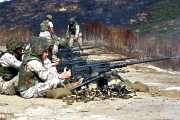
Marine Aircraft Group 39, 3rd Marine Aircraft Wing
Firing range, Camp Pendleton
U.S. Marine Corps Photo by Lance Cpl. James B. Hoke
23-SEP-2005
1024x683, 240K, JPEG

MP stands guard near village of Haji Raza Kalacha, Afghanistan
Operation Enduring Freedom
U.S. Army Photo by PFC Hugo A Baray-Vasquez
30-SEP-2003
1024x746, 149K, JPEG
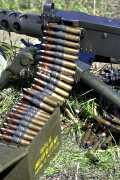
M2HB loaded with M8 API and M20 API-T
Exercise Tandem Thrust
U.S. DoD Photo by SSGT Jeremy Lock
08-MAY-2001
1024x1540, 586K, JPEG





 The M3 tripod is the standard ground mount of the M2 machine gun.
It is a folding tripod with three, telescopic, tubular legs connected at the tripod head.
Each leg ends in a metal shoe that can be stamped into the ground for greater stability.
The two trail legs are joined together by the traversing bar.
The traversing bar serves as a support for the traversing and elevating mechanism, which in turn supports the rear of the gun.
The tripod head furnishes a front support for the mounted gun that is further supported by the short front leg.
The M3 tripod is the standard ground mount of the M2 machine gun.
It is a folding tripod with three, telescopic, tubular legs connected at the tripod head.
Each leg ends in a metal shoe that can be stamped into the ground for greater stability.
The two trail legs are joined together by the traversing bar.
The traversing bar serves as a support for the traversing and elevating mechanism, which in turn supports the rear of the gun.
The tripod head furnishes a front support for the mounted gun that is further supported by the short front leg.
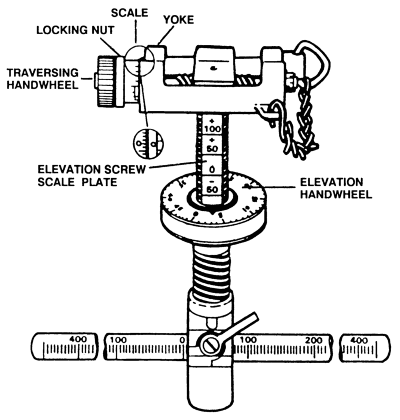
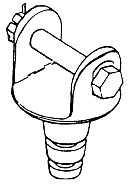
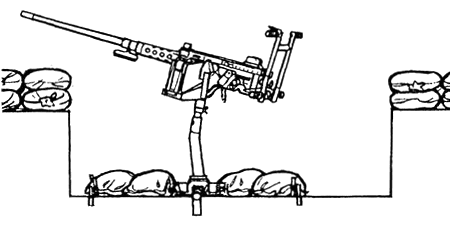
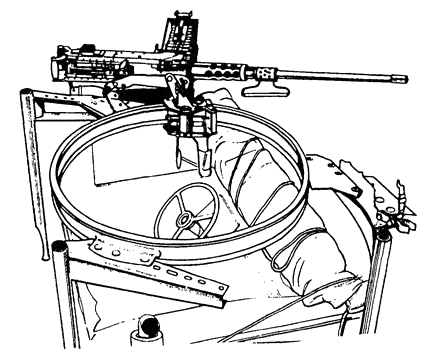

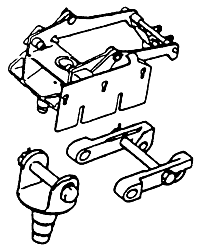







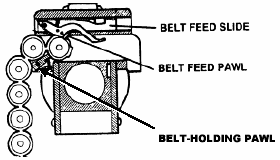

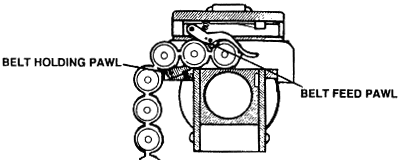






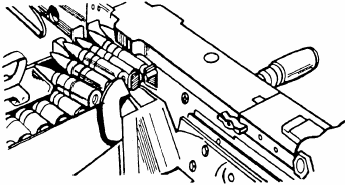






 Vehicle mounted M2HB
Vehicle mounted M2HB 12th Marine Regiment, Combined Marine Forces, Cobra Gold
12th Marine Regiment, Combined Marine Forces, Cobra Gold Marine Aircraft Group 39, 3rd Marine Aircraft Wing
Marine Aircraft Group 39, 3rd Marine Aircraft Wing